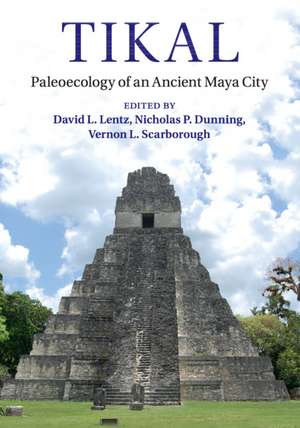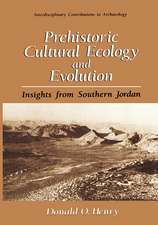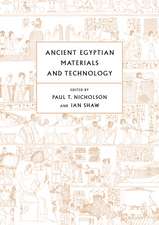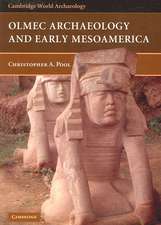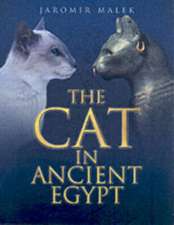Tikal: Paleoecology of an Ancient Maya City
Editat de David L. Lentz, Nicholas P. Dunning, Vernon L. Scarboroughen Limba Engleză Paperback – 27 noi 2019
| Toate formatele și edițiile | Preț | Express |
|---|---|---|
| Paperback (1) | 327.30 lei 6-8 săpt. | |
| Cambridge University Press – 27 noi 2019 | 327.30 lei 6-8 săpt. | |
| Hardback (1) | 538.23 lei 6-8 săpt. | |
| Cambridge University Press – 22 feb 2015 | 538.23 lei 6-8 săpt. |
Preț: 327.30 lei
Nou
Puncte Express: 491
Preț estimativ în valută:
62.64€ • 65.15$ • 51.71£
62.64€ • 65.15$ • 51.71£
Carte tipărită la comandă
Livrare economică 15-29 aprilie
Preluare comenzi: 021 569.72.76
Specificații
ISBN-13: 9781108796781
ISBN-10: 1108796788
Pagini: 371
Ilustrații: 57 b/w illus. 15 maps
Dimensiuni: 255 x 177 x 20 mm
Greutate: 0.64 kg
Editura: Cambridge University Press
Colecția Cambridge University Press
Locul publicării:New York, United States
ISBN-10: 1108796788
Pagini: 371
Ilustrații: 57 b/w illus. 15 maps
Dimensiuni: 255 x 177 x 20 mm
Greutate: 0.64 kg
Editura: Cambridge University Press
Colecția Cambridge University Press
Locul publicării:New York, United States
Cuprins
1. Tikal land, water, and forest: an introduction Nicholas P. Dunning, David L. Lentz and Vernon L. Scarborough; 2. The evolution of an ancient waterworks system at Tikal Vernon L. Scarborough and Liwy Grazioso Sierra; 3. At the core of Tikal: terrestrial sediment sampling and water management Brian Lane, Vernon L. Scarborough and Nicholas P. Dunning; 4. Bringing the University of Pennsylvania maps of Tikal into the era of electronic GIS Christopher Carr, Eric Weaver, Nicholas P. Dunning and Vernon L. Scarborough; 5. Examining landscape modifications for water management at Tikal using three-dimensional modeling with Arcgis .91 Eric Weaver, Christopher Carr, Nicholas P. Dunning, Lee Florea and Vernon L. Scarborough; 6. Life on the edge: Tikal in a bajo landscape Nicholas P. Dunning, Robert E. Griffin, John G. Jones, Richard E. Terry, Zachary Larsen and Christopher Carr; 7. Connecting contemporary ecology and ethnobotany to ancient plant use practices of the Maya at Tikal Kim Thompson, Angela Hood, Dana Cavallaro and David L. Lentz; 8. Agroforestry and agricultural practices of the ancient Maya at Tikal David L. Lentz, Kevin Magee, Eric Weaver, John G. Jones, Kenneth B. Tankersley, Angela Hood, Gerald Islebe, Carmen Ramos and Nicholas P. Dunning; 9. Fire and water: the archaeological significance of Tikal's Quaternary sediments Kenneth B. Tankersley, Nicholas P. Dunning, Vernon L. Scarborough, John G. Jones, Christopher Carr and David L. Lentz; 10. Fractious farmers at Tikal David Webster and Timothy Murtha; 11. The material culture of Tikal Palma Buttles, Carmen Ramos and Fred Valdez, Jr; 12. A neighborly view: water and environmental history of the El Zotz region Timothy Beach, Sheryl Luzzadder-Beach, Jonathan Flood, Stephen Houston, Thomas Garrison, Edwin Román, Steve Bozarth and James Doyle; 13. Defining the constructed niche of Tikal: a summary view David L. Lentz, Nicholas P. Dunning and Vernon L. Scarborough.
Recenzii
'This interdisciplinary study blends agroforestry and hydroarchaeology to show culture and nature interacting in the florescence and fall of a great Maya city. Rarely has the engineered environment of an ancient community been analyzed in such scrupulous detail: Tikal's temples and their socioeconomic foundations are, we now perceive, equally impressive.' Norman Hammond, University of Cambridge
'This impressive volume documents the results of the University of Cincinnati Archaeological Project at Tikal … This book would make an excellent case study for courses in environmental archaeology or historical ecology.' Natalie G. Mueller, Economic Botany
'… Tikal: Paleoecology of an Ancient Maya City represents an outstanding contribution to the social sciences and provides a serious example of effective interdisciplinary research in archaeology. … With Lentz, Dunning, and Scarborough's new volume, a group of innovative scholars have made Tikal an exemplary test case for historical ecology.' Latin American Antiquity
'This impressive volume documents the results of the University of Cincinnati Archaeological Project at Tikal … This book would make an excellent case study for courses in environmental archaeology or historical ecology.' Natalie G. Mueller, Economic Botany
'… Tikal: Paleoecology of an Ancient Maya City represents an outstanding contribution to the social sciences and provides a serious example of effective interdisciplinary research in archaeology. … With Lentz, Dunning, and Scarborough's new volume, a group of innovative scholars have made Tikal an exemplary test case for historical ecology.' Latin American Antiquity
Descriere
The primary question addressed in this book focuses on how the ancient Maya in the northern Petén Basin sustained large populations during the Late Classic period.
